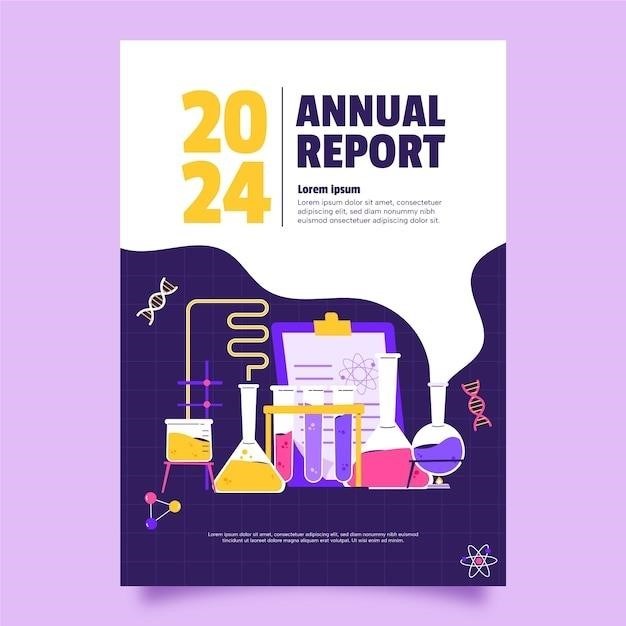Journal Impact Factor 2024⁚ An Overview
The 2024 Journal Citation Reports (JCR), released by Clarivate Analytics, provides impact and influence metrics from 2023 Web of Science data. The Journal Impact Factor (JIF) quantifies citations received relative to publications in the preceding two years. This data is crucial for journal ranking and evaluation.
Clarivate Analytics’ Journal Citation Reports (JCR) 2024
Clarivate Analytics’ Journal Citation Reports (JCR) 2024, released in June, presents a comprehensive overview of journal performance metrics based on 2023 citation data from the Web of Science. This year’s release includes several key updates. Over 7,200 journals received new subject category rankings with full JIF metrics. The JCR 2024 incorporated the Emerging Sources Citation Index (ESCI), expanding the scope of included journals and enhancing the assessment of emerging research publications. Furthermore, unified rankings across subject categories provide a more streamlined and consistent evaluation across disciplines. The JCR 2024 offers a wealth of information, including the Journal Impact Factor (JIF), which reflects the average number of citations received by articles published in a given year. This data allows researchers, institutions, and publishers to assess the relative influence and impact of journals within specific fields of study. The JCR’s detailed analysis facilitates informed decisions regarding journal selection and resource allocation, promoting a more robust and transparent academic ecosystem. Access to the complete JCR 2024 data, potentially including a downloadable PDF, can be obtained through Clarivate Analytics’ subscription services.
Journal Impact Factor (JIF) Calculation and Methodology
The Journal Impact Factor (JIF), a key metric within Clarivate Analytics’ Journal Citation Reports (JCR), is calculated using a specific methodology. The JIF for a given year represents the average number of citations received by articles published in that journal during the two preceding years. This calculation involves dividing the total number of citations received by articles published in those two years by the total number of citable articles published in the same period. Citable articles typically exclude items such as editorials, letters to the editor, and corrections. The JIF provides a relative measure of a journal’s influence within its field. A higher JIF generally suggests greater impact and visibility. However, it’s crucial to note that the JIF isn’t without limitations. Factors like the age of a journal, its subject area, and citation practices within that field can influence JIF scores. Furthermore, the JIF may not fully capture the nuances of research impact, and alternative metrics are increasingly being considered alongside the JIF to obtain a more holistic evaluation of a journal’s contribution to the scholarly community. The precise methodology employed by Clarivate Analytics for calculating the JIF is detailed in their JCR documentation and is subject to periodic refinements to ensure accuracy and relevance.
Top Journals and Impact Factors in 2024
The 2024 Journal Citation Reports (JCR) from Clarivate Analytics showcases a diverse range of top-performing journals across numerous scientific disciplines. While the precise ranking and JIF values are proprietary to Clarivate and not fully reflected in the provided text, the data indicates that journals like Science, Nature, and The New England Journal of Medicine consistently maintain high impact factors. These journals are frequently cited as leading publications in their respective fields, reflecting their significant influence on scientific advancement. The JCR’s comprehensive dataset reveals a nuanced landscape of journal performance, showcasing both established and emerging titles with high JIFs. These rankings are highly valued by researchers when selecting publication venues for their work, as a high JIF often correlates with increased visibility and impact within the scientific community. However, researchers should interpret JIF data cautiously, considering other factors such as journal scope and relevance to their specific research area, to make informed publishing decisions. The complete list of top journals and their respective impact factors for 2024 is available through the official JCR database.

Accessing and Interpreting JIF Data
Access JIF data via Clarivate Analytics’ Web of Science and Journal Citation Reports (JCR). Understanding JIF quartiles and rankings provides context for evaluating journal influence and research visibility within specific fields.
Web of Science and JCR Data Access
The primary source for accessing the 2024 Journal Impact Factor (JIF) data is Clarivate Analytics’ Web of Science platform, specifically through their Journal Citation Reports (JCR). To access this comprehensive database, a subscription is typically required, providing access to a wealth of information beyond just the JIF. The JCR database not only provides the JIF for each journal but also offers a plethora of other citation metrics, including the five-year Impact Factor, the Immediacy Index, and the Eigenfactor score, allowing for a more nuanced evaluation of a journal’s influence. Navigation within the JCR is generally intuitive, allowing users to search by journal title, ISSN, or subject category to quickly locate the desired information; Furthermore, Clarivate Analytics often provides tutorials and documentation to guide users through the platform’s features and ensure effective utilization of the data. The data itself is typically presented in a clear and organized manner, making it readily understandable. Remember that direct access to the full JCR database may be limited to institutions with subscriptions; however, summaries and analyses of the JIF data are often available through other online resources. These resources can offer valuable insights without requiring direct access to the full database.
Understanding JIF Quartiles and Rankings
Journal Impact Factor (JIF) data within the Journal Citation Reports (JCR) is often presented using quartiles, providing a relative ranking of journals within specific subject categories. These quartiles divide journals into four groups (Q1, Q2, Q3, Q4), with Q1 representing the top 25% of journals in a given field based on their JIF. Understanding quartile rankings is crucial for researchers aiming to publish in high-impact journals. A journal in Q1 is generally considered to have a significantly higher impact than those in Q4, reflecting the influence and visibility of its publications. However, it’s vital to remember that JIF is just one metric; the suitability of a journal for a specific research paper depends on several factors beyond its JIF or quartile ranking, including the journal’s scope, readership, and reputation within the research community. Therefore, researchers should consider a broader range of journal characteristics before making publication decisions. While quartiles offer a convenient way to compare journals, the absolute JIF values remain essential. The difference between a high JIF within Q1 and a low JIF within Q1 can be substantial, reflecting variations in citation patterns and overall journal influence. A comprehensive understanding of both quartile positioning and the actual JIF value ensures a more informed assessment of a journal’s standing and impact within its field.

JIF Trends and Analysis
The 2024 JCR data reveals an average JIF decrease across many publishers. This impacts research visibility and perceptions of journal quality, necessitating a nuanced interpretation of JIF trends.
Average JIF Changes Across Publishers in 2024
Analyzing the 2024 Journal Citation Reports (JCR) data reveals a complex pattern of Journal Impact Factor (JIF) changes across different publishers. While some publishers experienced increases in their average JIF, a significant number showed decreases. This fluctuation highlights the dynamic nature of scholarly publishing and the influence of various factors on citation patterns. Several contributing elements could be at play, including shifts in research trends, changes in publication strategies, and the evolving landscape of academic communication. The impact of open access publishing, for instance, might be a contributing factor, as it can potentially lead to increased visibility and citation counts for journals adopting this model. Conversely, a decrease in JIF might reflect a publisher’s focus on publishing high-quality research in niche areas, leading to fewer overall citations but potentially higher impact within specific fields. Therefore, interpreting these average JIF changes requires a careful consideration of multiple variables, including subject area, publication practices, and the overall research environment. It is crucial to avoid simplistic conclusions based solely on aggregated JIF data, and instead, engage in a more nuanced analysis that takes into account the specific characteristics of each journal and publisher.
Impact of JIF on Research Visibility and Journal Quality
The Journal Impact Factor (JIF), as reported in the 2024 Journal Citation Reports (JCR), significantly influences both research visibility and the perceived quality of journals. A higher JIF often correlates with increased visibility for articles published within that journal, attracting more attention from researchers and potentially leading to greater citation counts. This increased visibility can benefit both the authors and the journal itself, enhancing their reputation and influence within their respective fields. However, relying solely on JIF as an indicator of journal quality presents limitations. JIF is susceptible to various biases and does not necessarily capture the full spectrum of a journal’s contribution to scholarly discourse. For instance, a focus on publishing high-impact, groundbreaking research might result in a lower JIF compared to a journal that publishes a larger volume of articles, some of which receive many citations. The JIF also doesn’t account for the nuances of different research fields, where citation practices vary significantly. While JIF remains a widely used metric, a comprehensive assessment of journal quality should consider a broader range of factors, including editorial rigor, peer-review processes, and the journal’s overall impact on the advancement of knowledge. Over-reliance on JIF risks a skewed perception of scholarly contributions, potentially overlooking valuable research published in journals with lower impact factors.
